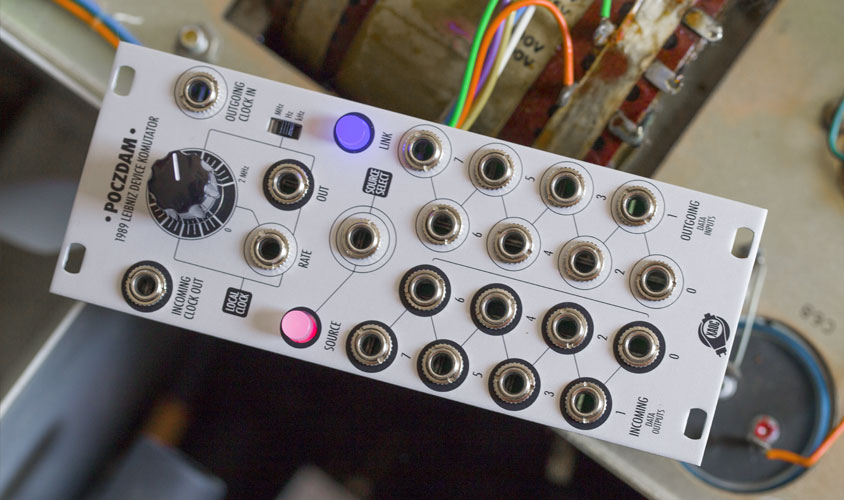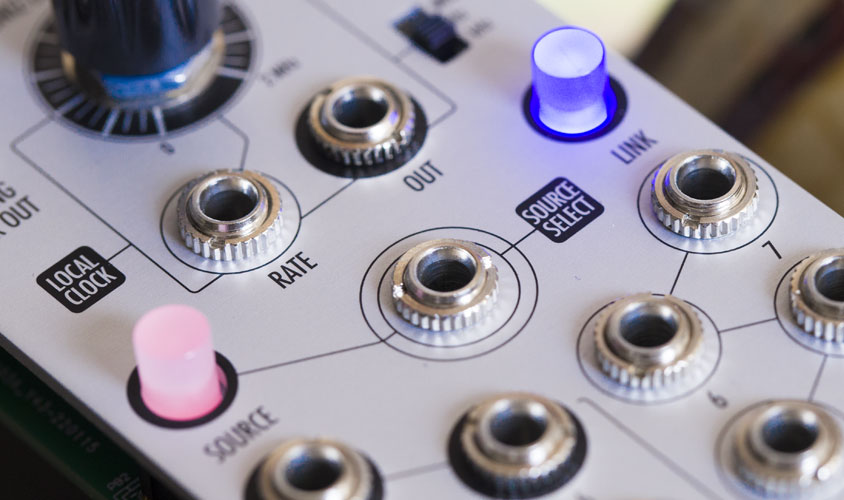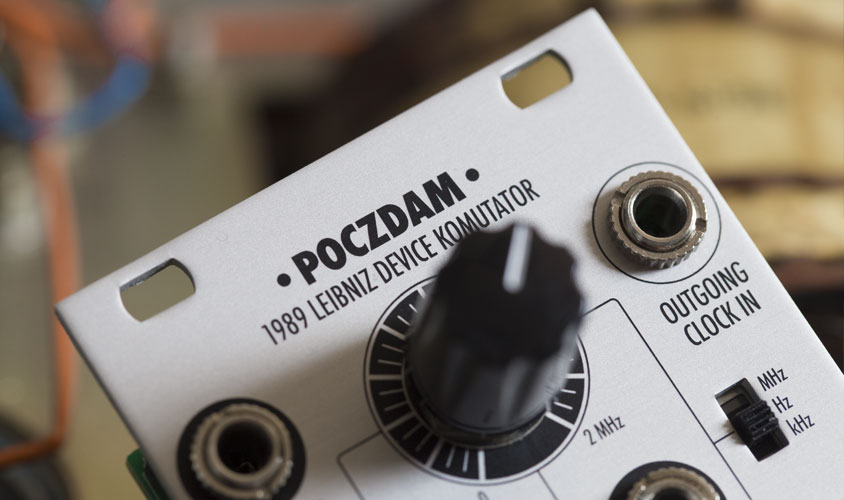Poczdam
Poczdam
Bit Inversion Commander
Model of 1989
Resources
Description
Poczdam is a binary data routing solution for the Xaoc Leibniz Subsystem. It facilitates manual and remote switching between two Leibniz data sources, modifying individual bits of the data stream, and re-clocking the data with its onboard voltage–controlled wideband oscillator or any external clock signal. Poczdam is particularly useful within complex Leibniz setups where the user needs to reconfigure the data flow between multiple modules. However, it can also be employed in small creative patches, e.g., for waveform splicing, disrupting rhythmic loops, or generating digital chaos.
To better understand the device and avoid common pitfalls, we strongly advise you to read through the entire user manual before use.
Features
- Component of the Leibniz Binary Subsystem
- Routing Leibniz data
- Reclocking Leibniz data
- Additional CV clock generator (up to 2MHz)
Technical details
- 6hp, 30mm deep
- Current draw: +20mA/-10mA
- Reverse power protection
Accessory
Our high quality Coal Mine black panels are available for all Xaoc Devices modules. Sold separately. Ask your favorite retailer.
Expandability
Drezno is the input/output front-end of the system, consisting of an analog–to–digital converter (ADC) and a digital–to–analog converter (DAC), that alone can be used for manipulating analog signals and voltages based on their binary representation.
Lipsk is a binary logic processing expander module that can flip (invert) individual bits of the digital signal representation. There are more Leibniz Binary Subsystem elements coming, with specialized and advanced sets of features.
Jena is a digital module that may be used as a flexible waveshaper for CV and audio signals, a wavetable oscillator, a Walsh function generator, or a rhythm generator.
Erfurt is a bi-directional digital counter, frequency divider. It has multiple applications: the output of the counter may be used as a phase source driving a digital wavetable, connected to other Leibniz modules it may scan waveshapes in Jena, produce stepped voltages useful for making interesting glissandi with Drezno and any VCO, generate gate patterns animating the spectrum of Odessa harmonic banks, spawn pseudo-chaotic sequences when fed back to Lipsk, etc.



